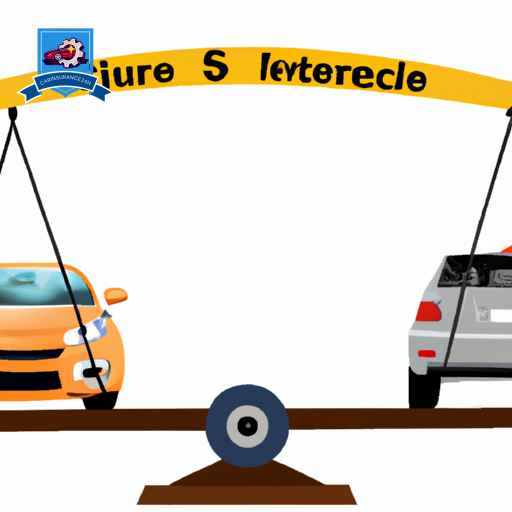Insurance companies meticulously analyze a multitude of factors to ascertain an individual’s risk profile. This process is pivotal in determining the premiums and coverage terms offered. The evaluation encompasses driving history, credit score, age, gender, lifestyle choices, occupation, and health history. Each factor plays a critical role in painting a detailed picture of the potential risk an insured might pose.
For instance, a spotty driving record or a low credit score could signal a higher risk, influencing insurers to adjust their offerings accordingly. Exploring these criteria further reveals the intricate balance insurers must strike between risk management and equitable premium setting. This discussion invites further exploration into how these determinants interplay to shape insurance policies.
Driving History and Records

One of the primary factors insurers evaluate when determining your risk profile is your driving history and records, as they offer a clear indication of your behavior and reliability on the road. This component is instrumental in the insurance underwriting process, where the adherence to traffic laws and the type of vehicle driven are scrutinized meticulously.
Driving history encompasses a wide array of data points, including, but not limited to, traffic violations, accidents (both at-fault and not-at-fault), and adherence to traffic laws. Significantly, a pattern of traffic law compliance is viewed favorably, as it suggests a lower risk of future claims. Conversely, a history replete with violations or accidents indicates a higher risk, potentially leading to increased insurance premiums.
The type of vehicle operated also plays a pivotal role in this assessment. Certain vehicle types are associated with different risk levels based on a variety of factors such as safety features, the likelihood of theft, and overall performance capabilities. For instance, sports cars, which are often driven at higher speeds, might be considered higher risk than family-oriented vehicles equipped with advanced safety features.
Credit Score Analysis

Analyzing an individual’s credit score is another crucial component insurers consider to gauge the financial responsibility and predict the likelihood of a claim being filed. This metric serves as a numerical representation of a person’s payment behavior, indicating how consistently they meet their financial obligations. Insurers leverage this information, correlating a higher credit score with a lower risk profile. This correlation is founded on statistical analyses that suggest individuals with higher credit scores are less likely to file claims. Conversely, those with lower scores are perceived as higher risks due to potential financial instability which may lead to more frequent or higher claims.
To accurately assess an individual’s credit score, insurers examine several factors including payment history, the amount of debt relative to credit limits, and the length of credit history. Payment history is particularly scrutinized as it directly reflects on an individual’s payment behavior, providing insurers with insight into how reliably future payments will be made.
For individuals concerned about their insurance premiums, score improvement becomes a vital strategy. Improving one’s credit score can be achieved through consistent, timely payments, reducing debt levels, and avoiding new credit inquiries that can temporarily lower scores. Demonstrating a responsible credit management strategy over time not only improves one’s credit score but can also positively influence insurance risk assessments, potentially leading to more favorable insurance rates.
Age and Gender Considerations

Age and gender are significant factors that insurers examine to determine an individual’s risk profile, as statistical data suggests variations in claim frequencies and severities among different age and gender groups. These demographic elements are scrutinized due to their substantial empirical correlation with risk exposure, which in turn influences premium calculations and policy terms. Understanding the rationale behind insurers’ focus on age and gender necessitates an appreciation of population statistics and legal regulations shaping insurance practices.
To elucidate, consider the following points:
- Population Statistics: Insurers rely on extensive data analysis to discern patterns in claims across various demographics. For instance, younger drivers may exhibit higher accident rates, influencing auto insurance premiums, while older individuals might encounter increased health insurance costs due to age-related health risks.
- Risk Assessment Precision: Age and gender act as proxies for insurers to gauge potential risk levels more accurately. This precision aids in tailoring insurance products to meet specific demographic needs while maintaining financial viability.
- Legal Regulations: Insurers must navigate a complex landscape of legal requirements that dictate how age and gender can be factored into insurance evaluations, ensuring non-discriminatory practices align with regulatory standards.
- Actuarial Justifications: The use of age and gender in determining insurance rates is supported by actuarial science, which employs statistical methods to assess risk. This approach ensures that premium rates are equitable and reflective of the insured’s risk profile.
Lifestyle and Occupation

Beyond age and gender, insurers also evaluate an individual’s lifestyle and occupation as integral components of their risk profile, recognizing the profound impact these factors have on claim patterns and risk assessment. This analysis extends to understanding how an individual’s personal activities and career choices might elevate or mitigate risk, thereby influencing insurance premiums and policy terms.
Lifestyle choices, particularly those related to hobbies, constitute a significant aspect of risk evaluation. Engaging in high-risk hobbies such as skydiving, rock climbing, or deep-sea diving introduces additional risk factors that insurers must account for. These hobby risks are meticulously analyzed for their potential to increase the likelihood of claims, prompting insurers to adjust coverage terms or premiums accordingly. The rationale behind this is straightforward: hobbies that expose individuals to higher risks of injury or death inherently pose a greater financial risk to insurers.
Similarly, occupation plays a pivotal role in determining an individual’s risk profile. Professions that involve physical labor, high-stress environments, or exposure to hazardous conditions are often deemed higher risk. For instance, a construction worker or a firefighter faces daily risks that a software developer or an accountant does not. These occupational hazards are factored into the insurance risk assessment, potentially leading to higher premiums for individuals in riskier professions.
Travel frequency also influences risk assessment, particularly for policies related to health or life insurance. Frequent travel, especially to regions with health advisories or political instability, can elevate an individual’s risk profile. Insurers consider the increased exposure to health risks, accidents, or other travel-related contingencies when evaluating an applicant’s lifestyle.
Within the insurance risk assessment framework, the examination of lifestyle and occupation is a nuanced process, designed to quantify how personal and professional choices impact an individual’s risk exposure.
Health History Review

One critical aspect insurers evaluate when constructing a risk profile is an individual’s health history, scrutinizing past and current medical conditions to forecast potential future claims. This thorough review allows insurers to assess the level of risk associated with providing coverage. By analyzing an individual’s medical history, insurers aim to predict the likelihood and cost of future medical care, hence determining the appropriate premium rates.
A detailed examination of health history encompasses several key elements, essential for insurers to accurately determine risk:
-
Family genetics: Insurers consider the hereditary conditions present in an individual’s family history. Certain diseases and health conditions have a genetic component that may increase the risk of future claims. Understanding the genetic predispositions can provide insights into potential health risks that might manifest later in life.
-
Chronic conditions: The presence of long-term health issues such as diabetes, heart disease, or hypertension has a significant impact on risk assessment. Chronic conditions often require ongoing medical attention and treatment, leading to higher healthcare costs.
-
Previous hospitalizations or surgeries: A history of significant medical interventions indicates potential recurring health issues. Insurers analyze these events to gauge the severity of past conditions and the possibility of future medical needs.
-
Prescription medications: The type and number of prescription medications an individual takes can reveal underlying health conditions. Regular use of certain medications might indicate chronic health issues, affecting the risk profile.
Frequently Asked Questions
How Do Changes in Marital Status Impact My Risk Profile With Insurers?
Changes in marital status can substantially affect your risk profile, primarily through tax implications and credit score changes. Insurers evaluate these factors to assess risk, potentially adjusting your premiums to reflect your new circumstances.
In What Ways Can My Social Media Activity Influence My Insurance Risk Assessment?
Social media activity may influence insurance risk assessments through privacy concerns and potential algorithm bias, as insurers analyze online behavior patterns. This scrutiny could lead to adjustments in policy terms based on perceived risk levels.
Are There Any Specific Breeds of Pets That Could Negatively Affect My Homeowner’s Insurance Risk Profile?
Certain pet breeds may indeed impact your homeowner’s insurance risk profile, particularly those known for aggressive behavior or high pet allergies incidence. Insurers may assess risk lower for pets undergoing certified training programs.
How Does Owning a High-Performance or Luxury Vehicle Affect My Insurance Premiums, Beyond the Basic Considerations of Driving History?
Owning a high-performance or luxury vehicle typically results in higher insurance premiums due to increased vehicle value and theft rates. Insurers assess these factors to gauge potential risk and financial exposure in claim scenarios.
Can Participation in Extreme Sports or Hobbies Lead to Adjustments in Life or Health Insurance Policies, Even if I Have a Clean Health History?
Yes, participation in extreme sports can lead to adjustments in life or health insurance policies. Insurers may increase hobby premiums by up to 20% for high-risk activities, reflecting the elevated risk these hobbies pose.










